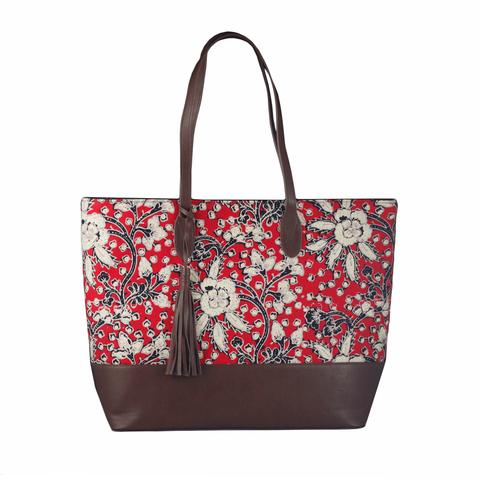It’s Engagement Season, a Shining Moment for Trade
Engagement season kicks off at Thanksgiving
It’s that magical time of year when Americans are more likely to get down on one knee and pop the question. An estimated 40 percent of wedding engagements in the United States happen between Thanksgiving and Valentine’s Day, according to the website WeddingWire.
Nothing is more synonymous with an engagement than a sparkling diamond ring, and Americans are spending more on them each year. The average cost of an engagement ring last year was $6,163 dollars, according to an annual survey by The Knot. This was an increase from $5,871 the year before and $5,392 in 2010.
Sharing pictures of engagement rings on social media is also on the rise. A 2016 survey by BRIDES Magazine found that 62 percent of brides-to-be posted a photo of their new engagement ring on their social networks after getting engaged, up from 59 percent in 2014.
Happy couples have international trade to thank for their picture perfect engagement ring. The United States imports 99 percent of its gemstones from other countries.
Where do we get our diamonds?
The U.S. market for diamonds was estimated at $23.5 billion dollars in 2016. The United States accounts for more than 35 percent of global diamond consumption, but you’ve probably noticed there isn’t a local diamond mine in a town near you. The United States is home to just one diamond mine located in Murfreesboro, Arkansas. The Crater of Diamonds State Park is open to the public and run mainly as a tourist attraction, where aspiring prospectors pay $10 to enter and keep any diamonds they find.
The bulk of the world’s major commercial diamond reserves are found in Africa, Australia, Canada, and Russia. Natural diamonds are typically formed in the intense pressure and heat of the Earth’s mantle and then emerge to the surface during volcanic eruptions. Rough diamonds are then excavated, mined and sold to wholesale manufacturers, before being cut and polished at specialized facilities in countries like Israel, India and Belgium. They’re then sold on one of twenty-eight diamond exchanges across the world before ending up in your local U.S. jewelry store.
With all of these stops around the globe before landing on your or your loved one’s ring finger, it might seem impossible to track the origins of your diamond. This is where international trade rules can shed more light on your purchase.
Cooperation in the WTO to stem the flow of “conflict diamonds”
The diamond trade has less than a sparkly history. The United Nations (UN) defines “conflict diamonds” as those mined in areas controlled by forces opposed to the legitimate, internationally recognized government of a country, and that are sold to fund military action against that government. In the 1990s, rebel groups in western and central Africa used proceeds from the diamond trade to fund violence against their own governments and civilians. To help prevent conflict diamonds from entering the legitimate diamond trade, industry associations, human rights groups, and the UN in 2003 jointly created the Kimberley Process, a certification scheme to ensure that rough diamonds are conflict-free.
Although WTO Members recognized the “the devastating impact of conflicts fuelled by trade in conflict diamonds on the peace, safety and security of people in affected countries,” Members requested a formal waiver to derogate from their normal trade commitments so they could take domestic measures to implement the Kimberley Process through trade restrictions. Members felt a waiver would be the most transparent way of documenting the derogation as an exception, and the best way to create legal certainty for countries imposing quantitative restrictions not otherwise allowed by trade rules.
The Kimberley Process appears to have made an important impact: the percent of conflict diamonds in the global diamond trade has dropped from approximately 15 percent in the 1990s, to just 1 percent in 2010. It’s a telling example of how the global trade community can work together to address common concerns while retaining the integrity of the overall trading system.
If you can’t mine ‘em, make ‘em
Critics of the Kimberley Process say the UN’s narrow definition of conflict diamonds allows loopholes for conflict diamonds to leak into the global supply. With this worry in mind, there may be an alternative to the international diamond trade growing in a lab near you, thanks to technology originally used to advance American trade and manufacturing.
General Electric (GE) produced the first commercial man-made diamond in 1956, but this small brown diamond wasn’t intended for your finger. Diamonds are nature’s hardest substances, and are used a number of industrial capacities. GE says it used the first man-made diamonds for cutting and polishing metals, glass and even teeth. Today, synthetic diamonds are used in a number of important sectors, including computer chip production, construction, and drilling for natural gas and oil.
The United States is one of fifteen countries with the technology capable of producing synthetic diamonds, which are made in labs using high pressure and high temperatures (HPHT) or chemical vapor deposition (CVD). In addition to industrial diamonds, labs are now capable of producing colorless diamonds— really, just pretty clusters of carbon atoms— nice enough to sparkle on your engagement ring.
Although the United States isn’t rich in natural diamond resources, technological advances (made with trade in mind) have provided an entry point for U.S. manufacturers to make their mark on the diamond trade.
Remember #thankstrade when posting on Instagram
Whether you’re buying a natural diamond from a Russian mine, or a man-made diamond grown in a North Carolina lab, take a moment to appreciate the pivotal role trade plays each and every engagement season.
Like many other products that have become a part of our daily lives and valued traditions, we can count on the fact that jewelry stores will always have diamonds waiting for us beneath lighted glass shelves. In reality, the path that diamonds take to get there are made possible by complex global supply chains and better facilitated by international trade rules.
Perhaps its time to change the age-old adage “diamonds are a girl’s best friend” to “trade is a girl’s best friend”. And— to remember #thankstrade at the bottom of your engagement announcement selfie on social media this engagement season.







